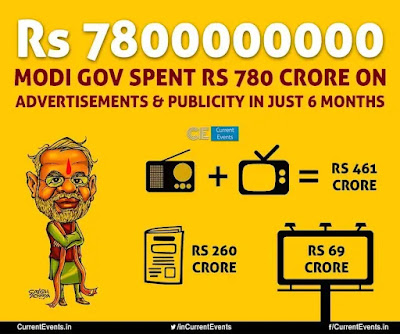Maggie and I went out today for some shopping and had lunch out. The government
gained a few thousand rupees. We bought some clothes. The taxes were about 6%
on average. Even a decent shirt costs over Rs 2000 today. I bought two shirts
and a pair of trousers. Maggie bought a sari and a couple of churidars. The bill
comes around Rs 20,000. The government gets 6%: that is, Rs 1200. We go for
lunch. The bill is about Rs 500. The government gets Rs 60. We buy soaps and
other essential items from a hypermarket. The government gets a few hundred
rupees. We fill fuel in the car. The government becomes a highway thief. I buy
a bottle of Morpheus brandy on the way back since it’s weekend. Cost: Rs 1386.
The government gets more than Rs 800 by way of tax on that one single bottle
because the tax on liquor in Kerala is 250%. Wow!
I renew my car’s insurance. The government swindles me
out of a few thousand rupees on the minimum premium possible. I go to the bank
to check my account. The government has already stolen 10% from all my savings
automatically. What a fantastic system! Our government knows how to suck blood.
Is the government a vampire?
I renew my medical insurance. Developed countries look
after the welfare of their senior citizens in many ways and free healthcare is
one of those ways. In India, you have not only to pay an enormous premium on
your health insurance if you are a senior citizen but also pay a hefty tax to
the government just for ensuring your own treatment if required. I pay about
Rs5000 as tax on my health insurance annually.
I watch the TV and pay the government an enormous
amount for that. I use the internet and pay the government again. I pay the
government for everything from the food I eat to the movie I watch. I pay the
government even for saving a little money in the bank after paying all these
taxes. The government steals even from the food I buy for my cats.
What does the government do for me in return? Other
than hate and occasional preaching in the media?
What does the government do with the lakhs of crores
it gets by way of taxes? Doesn’t the government have any obligation to tell the
citizens what it does with all the money it collects from them? At least that.
I know these are foolish questions. But today, on the
20th day of the AtoZ Challenge, I wanted to be frivolous, talking
about money. Thank you for bearing with this. Keep paying your taxes and be a
good citizen who never questions anything.
PS. I'm
participating in #BlogchatterA2Z
Previous
Post: Snake
Spirituality

Hari OM
ReplyDeleteFar too common a problem this. And history shows that excess tax burdens upon one's "serfs" results either in decimation of that source due to starvation or suicide, or a rebellion by that source - both leading to implosion of one's empire. Or the national economy, if you prefer. It's just a matter of scaling and timing... YAM xx
T=Thistle
That's a bleak prospect.
DeleteTaxes were being collected all the while but suddenly everything has tended to become so obvious on account of the blatant way the Government operates these days- as for example, frequent increase in fuel prices.
ReplyDeleteToday's news says that GST on a lot more items is going to be raised, some to 28%. How do they dare to do this? Especially when taxes collected are often more than what the budget had expected!
DeleteThat last punch is right on the face! It's funny how everyone gets diverted to the same old disparities, issues created by Govt and forgets the actual burning issues...like the ones u mentioned...
ReplyDeleteDropping by from a to z "The Pensive"
The indifference or blind compliance of the people is really rattling. This morning's newspapers tell us that they are going to raise the GST on 143 items. https://indianexpress.com/article/business/commodities/gst-council-for-hiking-rates-of-143-items-asks-states-for-views-7884298/
DeleteAnd the raise is from 18 to 28%. No one seems bothered. What's happening? Have we all been drugged?